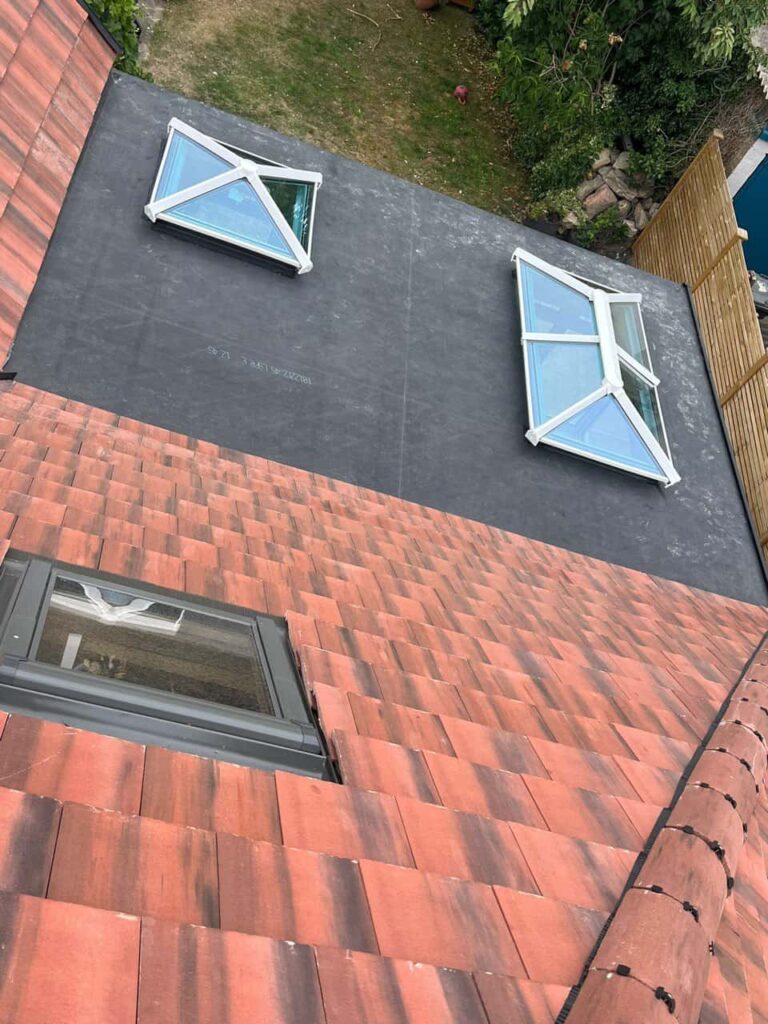When a powerful storm hits, your roof takes the brunt of nature’s force — shielding your home from rain, wind, and debris. Unfortunately, even the strongest roofs can suffer damage during extreme weather. From loose tiles to hidden leaks, storm damage can quickly escalate into larger problems if not addressed promptly. At LS Roofing Marlow, we understand how vital it is to act fast and methodically after a storm to prevent further deterioration and keep your home safe.
This practical checklist will guide homeowners in Marlow through the essential steps for assessing and managing post-storm roof repairs efficiently and safely.
1. Conduct a Visual Inspection — From the Ground
After the storm has passed, the first step is to visually inspect your roof from the ground. Avoid climbing onto the roof until it has been checked by professionals. Instead, use binoculars or take photos from a distance to look for visible signs of damage.
Common signs of storm damage include:
- Missing, cracked, or displaced roof tiles
- Sagging rooflines or uneven areas
- Debris accumulation in gutters or valleys
- Fallen branches resting on the roof
- Shingles or felt fragments on the ground
Even small signs can indicate underlying issues, so it’s important not to ignore them.
2. Check for Interior Leaks or Water Stains
Storms often cause immediate or delayed leaks that may not be obvious from the outside. Inside your home, inspect ceilings, lofts, and upper walls for signs of damp patches or bubbling paint.
Look for:
- Dark, discoloured areas on ceilings
- Peeling wallpaper or flaking paint
- Musty smells in upper rooms or loft spaces
Catching these signs early can help prevent mould, insulation damage, and structural weakening.
3. Clear Gutters and Downpipes
Blocked or overflowing gutters are a common aftermath of heavy storms. Leaves, twigs, and broken tiles can clog the system, preventing water from draining properly and causing it to pool on the roof.
Once it’s safe, carefully remove any debris from guttering and downpipes. If you notice sagging or leaks in the gutter joints, this could signal damage that needs immediate attention.
4. Identify and Secure Immediate Hazards
If there are fallen branches, loose flashing, or exposed underlay, it’s crucial to take temporary steps to prevent further damage. Covering exposed areas with waterproof sheeting can help protect your property until professional help arrives.
Avoid attempting any structural repairs yourself — particularly after severe weather — as roofs can be unstable and slippery. Instead, focus on keeping the area safe and contact an experienced roofer such as LS Roofing Marlow to assess the situation.
5. Document the Damage
Taking clear photos of visible damage before any repairs begin is essential for record-keeping. Photograph affected areas from multiple angles, both inside and outside. This provides a useful reference for your roofing contractor to understand the full scope of the problem.
6. Arrange a Professional Roof Inspection
Once the immediate risk has been stabilised, it’s time for a thorough inspection. A professional roofing contractor will check for structural weaknesses, hidden leaks, and damaged flashing that might not be visible from ground level.
An inspection from LS Roofing Marlow includes a detailed assessment of:
- Roof tiles or slates for cracks and displacement
- Flashing and mortar around chimneys or vents
- Underlay and waterproof membranes
- Gutter alignment and condition
- Roof timbers or decking for signs of water ingress
This step ensures that even subtle storm damage is addressed before it becomes a costly repair later on.
7. Schedule Necessary Repairs Promptly
Delaying storm-related repairs can worsen roof deterioration and lead to further water damage inside the property. Timely restoration ensures that your roof remains watertight and ready to face future weather conditions.
Common post-storm repairs include:
- Tile and slate replacement
- Repointing ridge tiles
- Replacing damaged flashing
- Restoring broken guttering or soffits
- Repairing wind-lifted felt or underlay
Professional roofers can carry out these works safely and efficiently, restoring your roof’s integrity.
8. Consider Preventative Maintenance for the Future
Storms in Buckinghamshire are becoming increasingly unpredictable, making regular maintenance more important than ever. Preventative care can dramatically reduce the extent of damage during future weather events.
Here are a few preventive measures:
- Schedule routine inspections before winter and after major storms
- Trim overhanging branches that can fall onto the roof
- Keep gutters and valleys clear year-round
- Replace worn or loose flashing before it fails
Regular maintenance by LS Roofing Marlow ensures your roof is always ready to handle harsh conditions with minimal risk.
Conclusion
Storms can strike unexpectedly, but how you respond afterward determines the extent of the damage. By following a structured checklist — from inspection and documentation to professional repair — you can protect your home and extend the lifespan of your roof.
LS Roofing Marlow provides reliable post-storm roof inspections and repairs across Marlow and Buckinghamshire, ensuring every roof is restored safely and effectively after severe weather. Whether your home has sustained minor damage or needs urgent attention, our expert team is here to help restore protection and peace of mind.
Call us on: 01628 562 896
Click here to find out more about LS Roofing Marlow
Click here to complete our contact form and see how we can help with your roofing needs.

